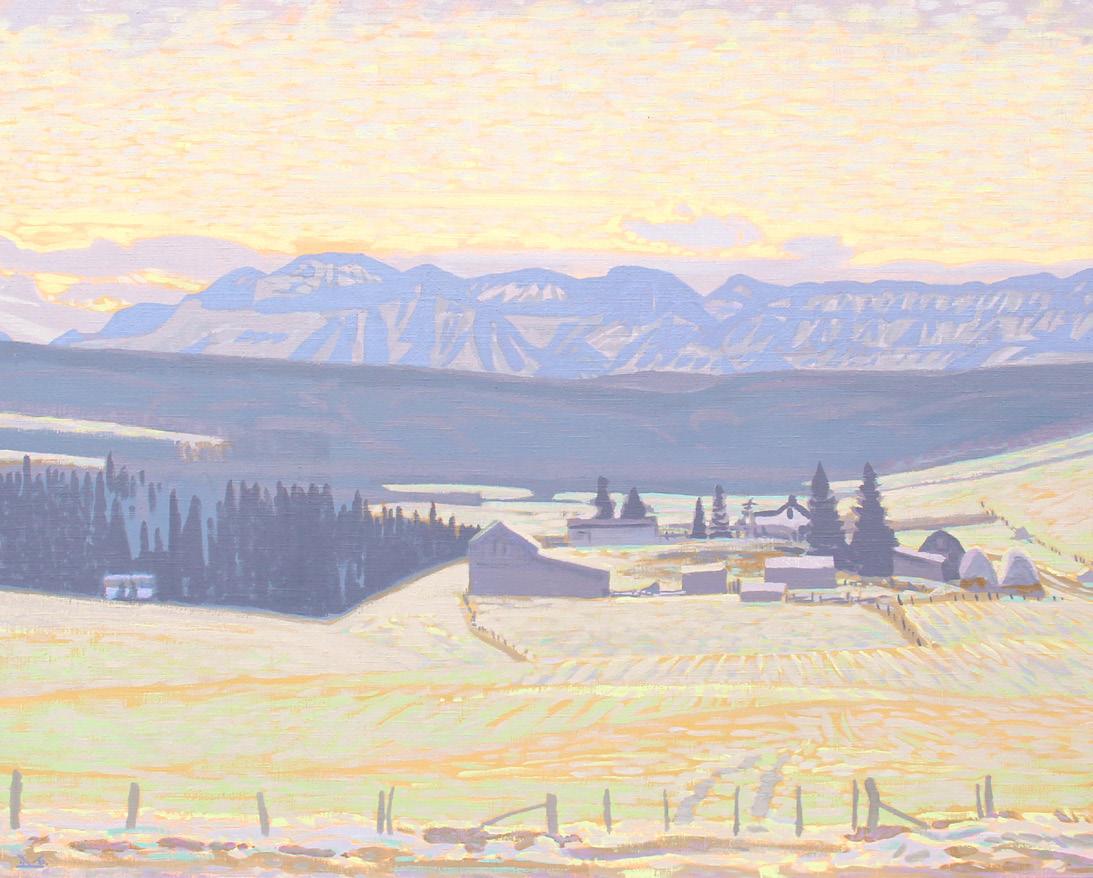

THROUGH BRUSH & SPIRIT
The Legacy of Illingworth “Buck” Kerr
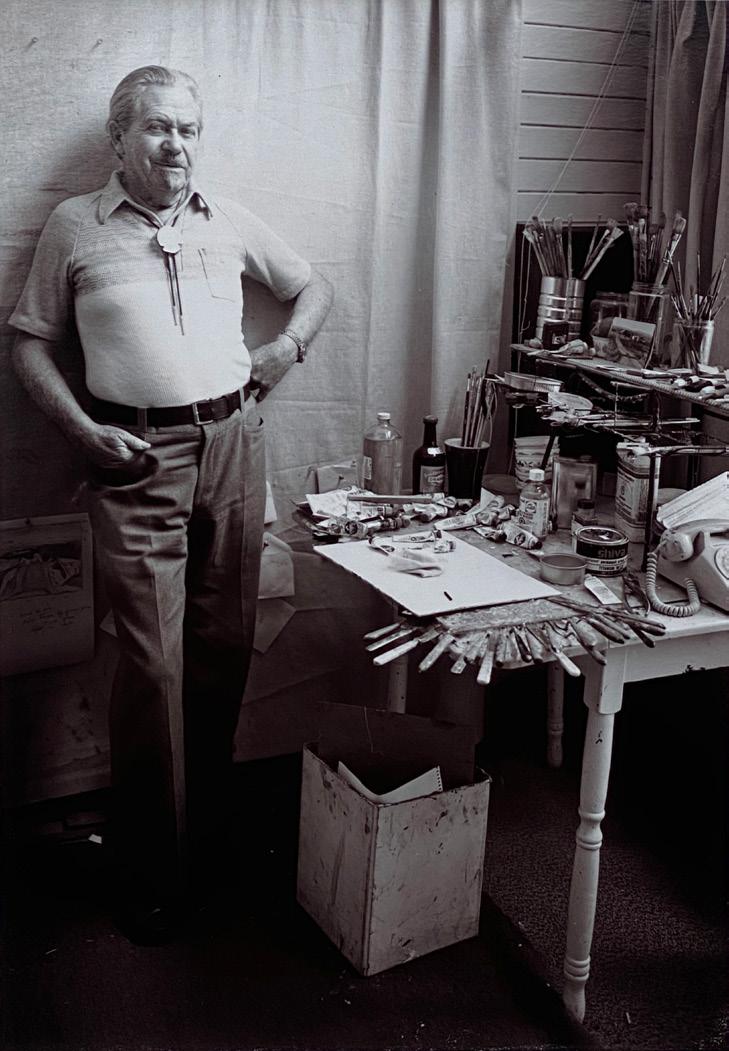
THROUGH BRUSH & SPIRIT
The Legacy of Illingworth “Buck” Kerr
Featuring works from the Terra Capital collection in Calgary, as well as various private collections across Alberta.
Essay by Writer/Curator Mary-Beth Laviolette
Calgary | February 1 to 22, 2025
Opposite: Harry Palmer (1930 – 2020), Illingworth Kerr, Print #2, 1983, photograph on paper, 8.75" x 6"
Cover: Illingworth Kerr (1905 – 1989), Ranch South of Priddis, Alberta, 1974, acrylic on linen, 54.25” x 72.5”

Alberta Carnival, 1981
oil on canvas board, 18” x 22”
THROUGH BRUSH & SPIRIT
The Legacy of Illingworth “Buck” Kerr
We must realize that basic talent is not enough. That technique and knowledge of materials is not enough. The essence of painting is distilled from personality.” i
Illingworth Kerr, unpublished 1968 lecture Norman Mackenzie Gallery, Regina, SK
No more definitive words could have been spoken when Buck Kerr delivered this observation a year after retirement. Formerly the Head of the Alberta College of Art (now Alberta University of the Arts) from 1947 – 1967, Kerr was now a happy retiree.
Keen to impose his own artistic personality on the southern Alberta landscape, a region that—except for Group of Seven member, A.Y. Jackson—had been thoroughly overlooked by Canada’s most celebrated landscape artists. Not by Kerr, though, who—now able to paint full-time—was about to set the record straight. Who could blame him? As an art student in Toronto (1924 – 1927), he remembered well Arthur Lismer’s dismissive remark about prairie telephone poles being the only thing worth painting. Born and raised in Saskatchewan, Kerr knew in his heart this was not true—a lifelong point of view expressed in many of the works in this exhibition.
From the beloved Qu’Appelle Valley, where he had grown up, to his later life in the foothills and front ranges of the Rockies, Kerr captured many familiar scenes. There were the inspiring vistas of southwestern Alberta, finely represented in Ranch South of Priddis, Alberta—a major work once included in the Edmonton Art Gallery’s 1985 retrospective Harvest of the Spirit. Add to that the Diamond Valley area, shown in Turner Valley Hills, which Kerr returned to seasonally, and the agrarian countryside so richly
i Callahan, Maggie. Harvest of the Spirit: Illingworth Kerr Retrospective, The Edmonton Art Gallery (Edmonton: 1985), p. 5.
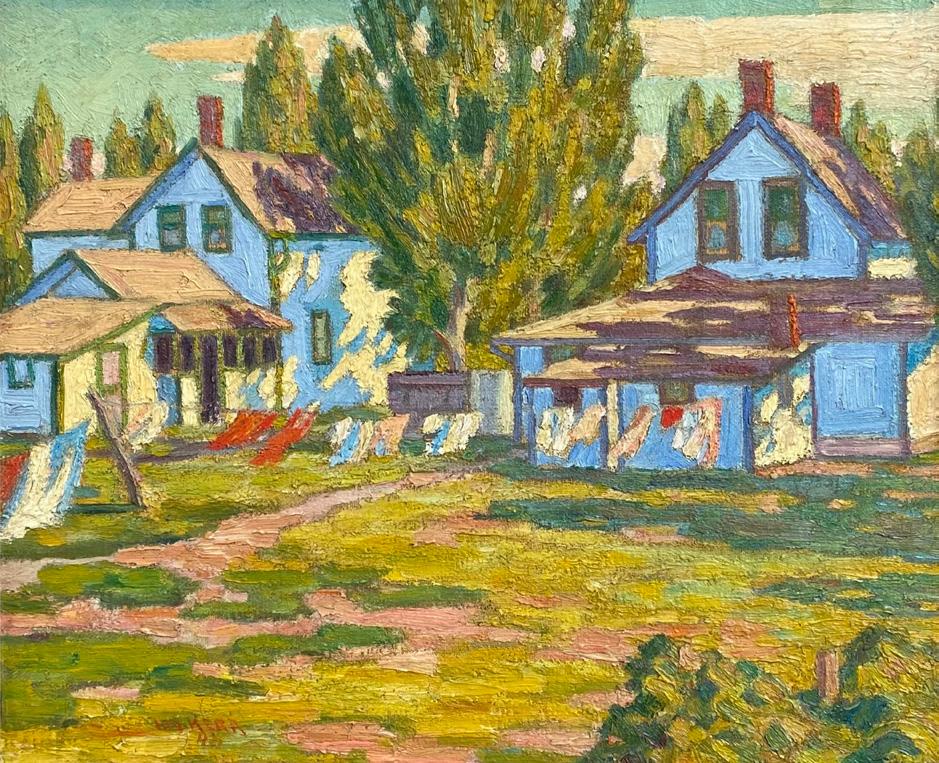
Backyards, 1926
oil on canvas, 13” x 16”
The Gravel Quarry, Lumsden, circa 1925
oil on canvas, 19” x 29”
Prairie Nocturne, 1926
oil on canvas board, 10" x 8"
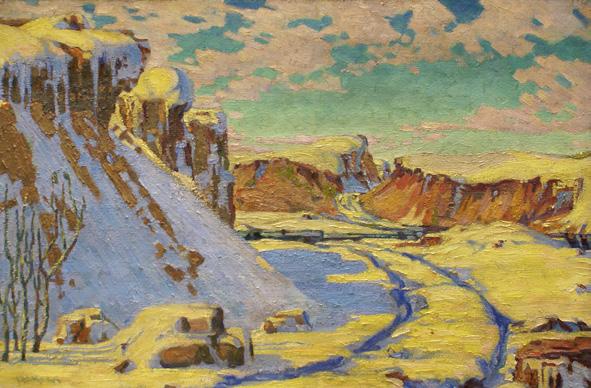
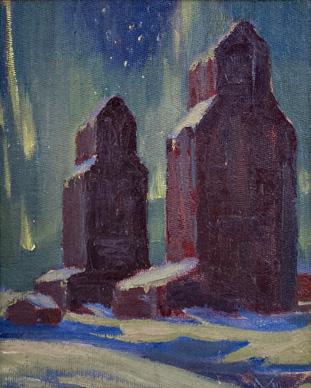
described in Creek West of Millarville, Prairie Towers and Threshing - Study. There is a sense of his knowing every western nook and cranny.
Other subjects enticed as well. Alpine landscapes, which both frustrated and rewarded him, became an attraction in his later years, especially as expressed in the cool colours of First Snow, Kananaskis and the starry illuminations of Lake O’Hara Nocturne, Late September. Alberta’s early ranching heritage is evoked in The Creek at John Ware’s, Millarville, while later paintings of Saskatchewan’s striking Qu’Appelle Valley couldn’t help but stir memories of Kerr’s eight hard years in Lumsden. There, in a studio above the local pool hall, the young art graduate attempted to support himself with harvest work, trapping, sign painting and meager art sales.
Several paintings in the Terra Capital collection, measuring 12 x 16 inches, were undoubtedly painted outdoors, en plein air. In other words, Kerr’s immediate impressions of the landscape captured the spirit or essence of a scene—as in the reflective and atmospheric Prairie Slough, Evening and Yellow Mountains near Bow Summit, with greens, blues and ochres applied in broad brush strokes.
Kerr’s use of colour was also an interpretative act. In Harvest of the Spirit, exhibition curator Maggie Callahan noted, “Kerr has been called an habitual painter with purple.” ii She refers to paintings rendered in a muted palette,
ii Callahan. Harvest of the Spirit, p.44.

oil
Oblique Fields #1, 1950
oil on board, 24" x 30"
Bread and Wine, circa 1950
on canvas, 24” x 34”
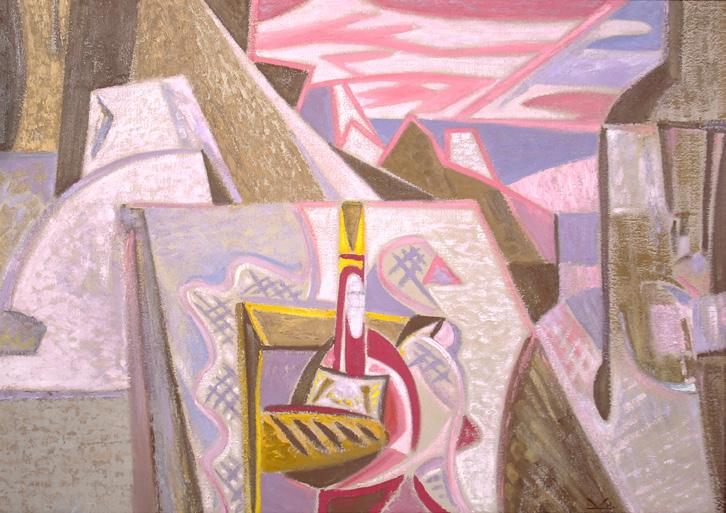
like the yellows and purples of the aforementioned Ranch South of Priddis, Alberta, and the heavy nocturnal shadows in Superstition Mountain, Mesa, Arizona. Credited with being a modernist rather than a descriptive realist, Kerr focused on the mood of a place as he experienced it.
The Terra Capital collection covers the 1970s and 1980s. Although indebted to the boldness of the Group of Seven, whom Kerr knew in the 1920s, by the time he reached his senior years, he was recognized for a personal style honed, especially during these important decades post-retirement. It was a time when the former instructor and administrator could finally live off his art. In 1973, he received an honorary doctorate from the University of Calgary, followed a year later by his nomination to the Royal Canadian Academy of Arts. In 1975, the University of Alberta recognized his contribution to the province with a gold medal. Later, The Edmonton Art Gallery organized a touring retrospective, Illingworth Kerr: Fifty Years a Painter. In 1982, Kerr was awarded the Order of Canada.
This was also a period of travel, shared with his wife, Mary Spice Kerr, whom he married in 1938. She is represented in this exhibition by her plein air oil on panel, Autumn Yellow. The American southwest was a big

Ice and Still Water #1, circa 1969
oil on canvas, 21" x 29.5"
Turning Doe, 1961 oil on panel, 16” x 12”
Untitled (Horses), circa 1965
monoprint with sand on paper, 18” x 24”
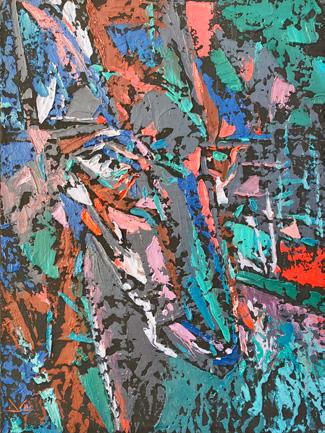

attraction; while the couple sketched and painted in Arizona, Utah and California, Kerr completed his autobiography, Paint and Circumstance, which was published a few years before his passing. Reflecting on what he had learned over sixty years of painterly effort, Kerr wrote, “Most gratifying was an assurance that the sense of Western space and its magic moods which had always obsessed me had successfully been captured. Not as I often dreamed and hoped for, but still gratifying.” iii
In this collection we see some of those moments Kerr strove so diligently to understand and express.
Mary-Beth Laviolette, January 2025
iii Kerr, Illingworth. Paint and Circumstance: Illingworth Kerr, published by Jules and Maureen Poscente, Ralph Hedlin, Heidi Redekop and William H.Hopper (Calgary: 1987), p. 153.

Turner Valley Hills, 1970
oil on burlap, 30” x 36”
Ranch at Millarville, 1976
oil on linen, 24” x 34”
First Snow, Kananaskis, 1975
oil on masonite, 16” x 20"
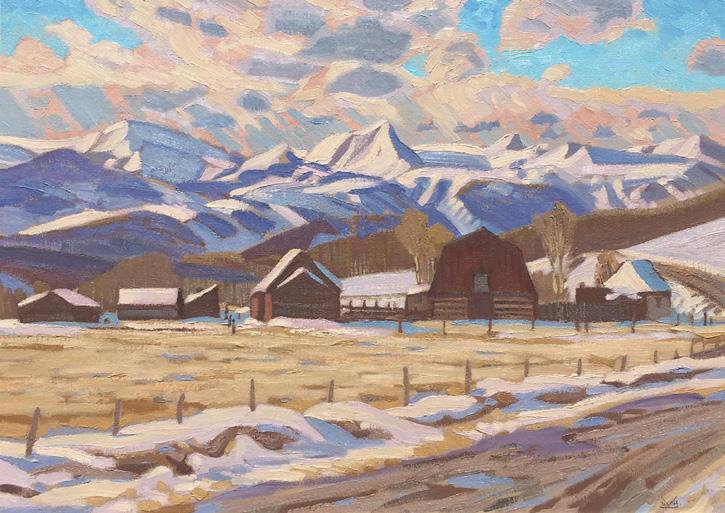

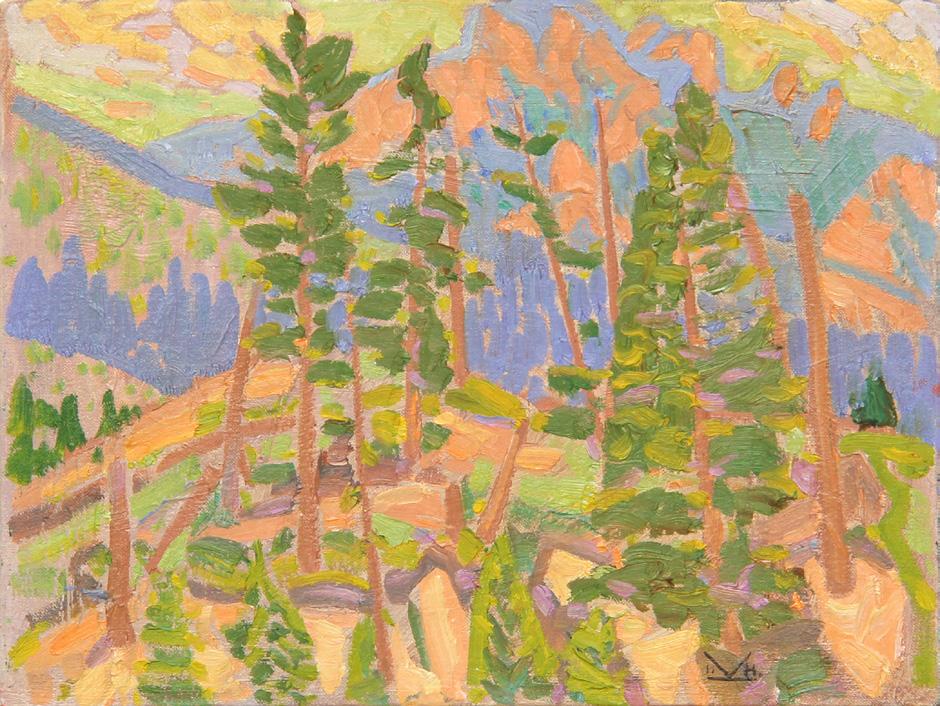
Yellow Mountains near Bow Summit
oil on canvas board, 12” x 16”
Lakeshore, Evening, North Bay, Ontario, 1967
oil on panel, 12” x 16”
Mary Spice Kerr (1905 – 1982)
Autumn Yellow
oil on panel, 12” x 16”
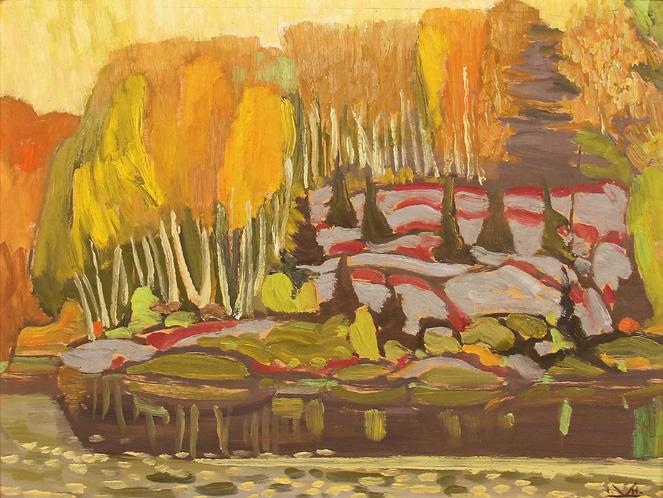


The Creek at John Ware’s, Millarville oil on canvas board, 16” x 20”
Creek West of Millarville, 1975
oil on linen, 18” x 24”
Hills, Turner Valley
oil on canvas board, 12” x 16”
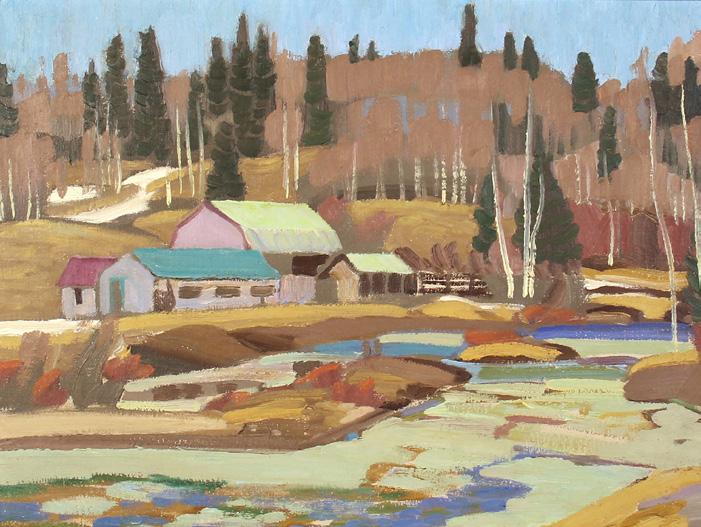

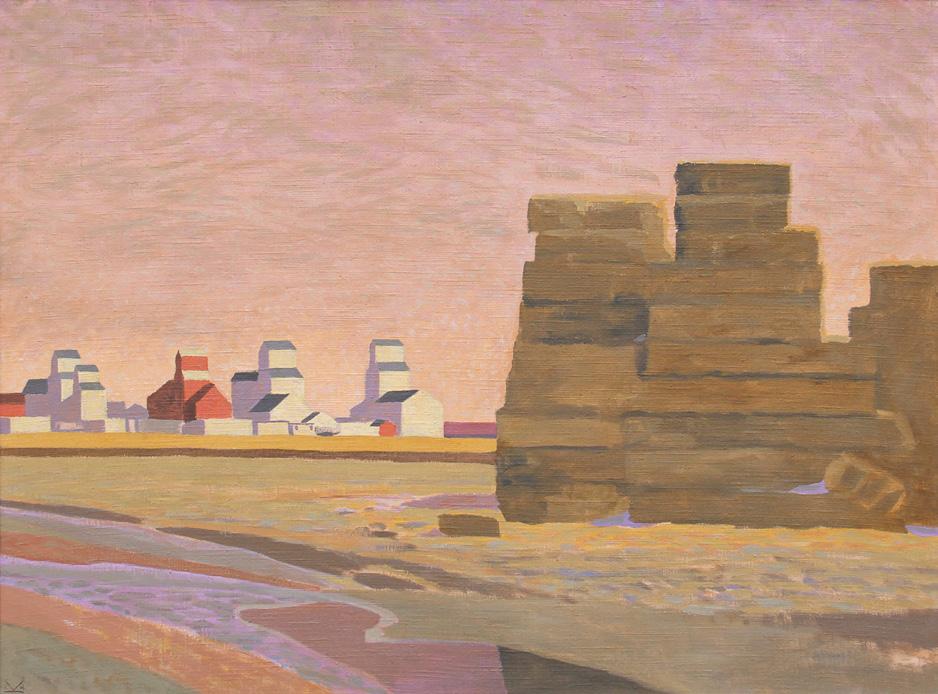
Prairie Towers, 1974
acrylic
Prairie Slough, Evening, 1981
Threshing – Study, 1978
oil on canvas board, 12”
on linen, 40” x 54”
oil on canvas board, 12” x 16”
x 16”
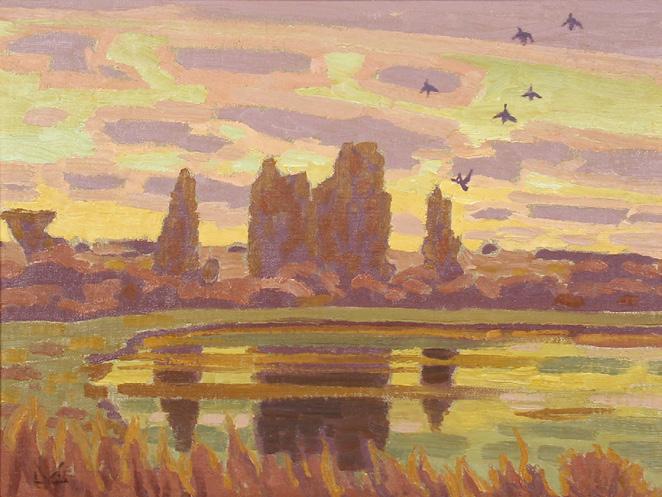

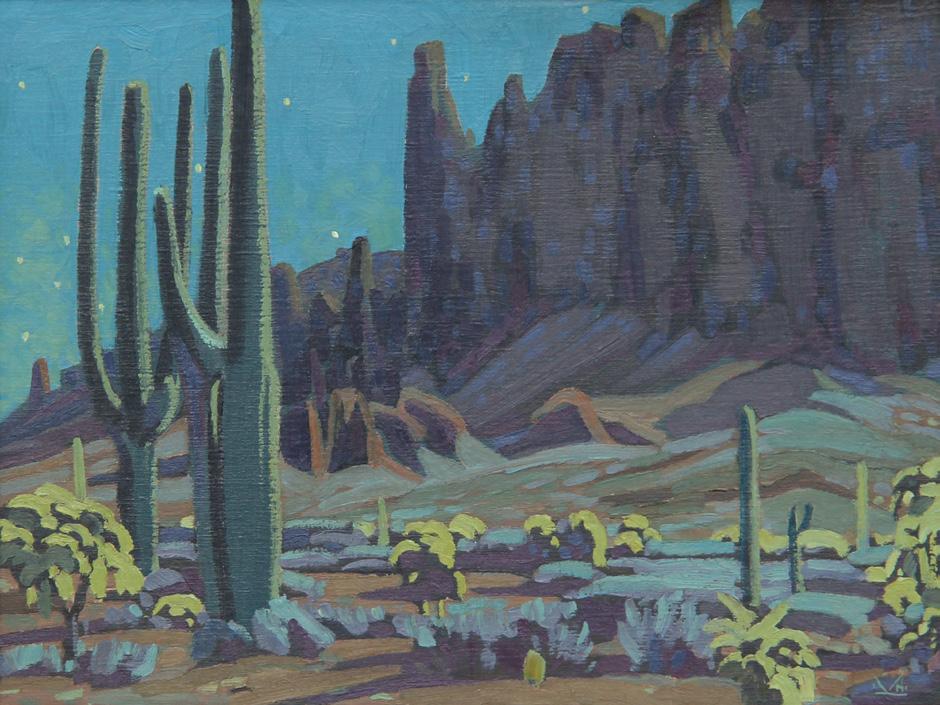
Superstition Mountain, Mesa, Arizona, 1977
oil on linen, 18” x 24”
Watchman, Zion National Park, Utah, 1977
oil on canvas board, 12” x 16”
California Hill Farm, 1981
oil on canvas board, 16” x 20”
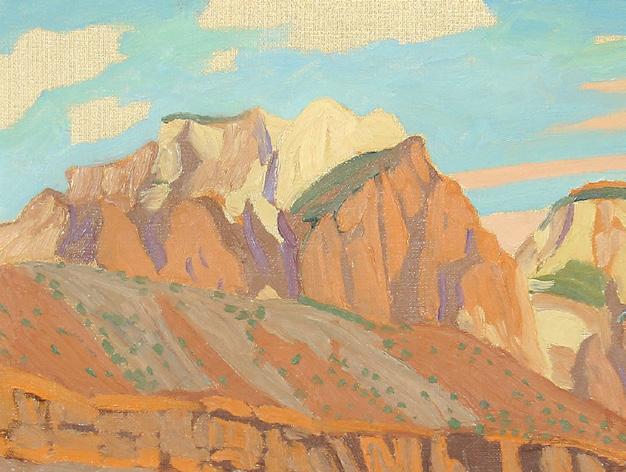
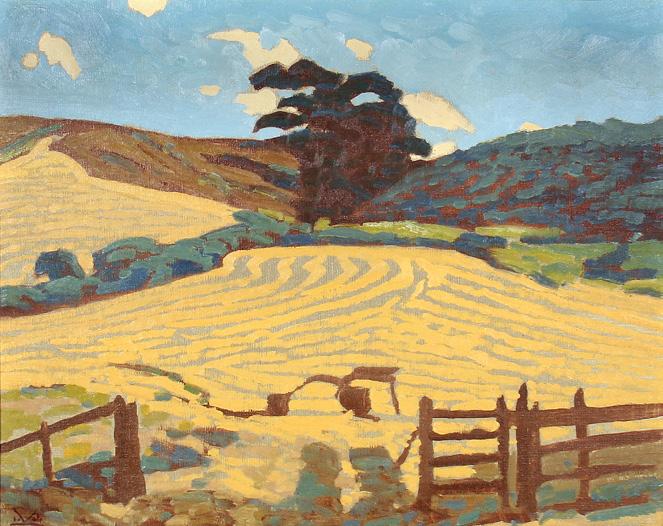

Lake O’Hara Nocturne, Late September, 1983
oil on canvas board, 16” x 20”
Nocturne for Dav, 1987
oil on canvas board, 12” x 16”
Hill Road, Winter Night, 1986 oil on canvas board, 12” x 16"
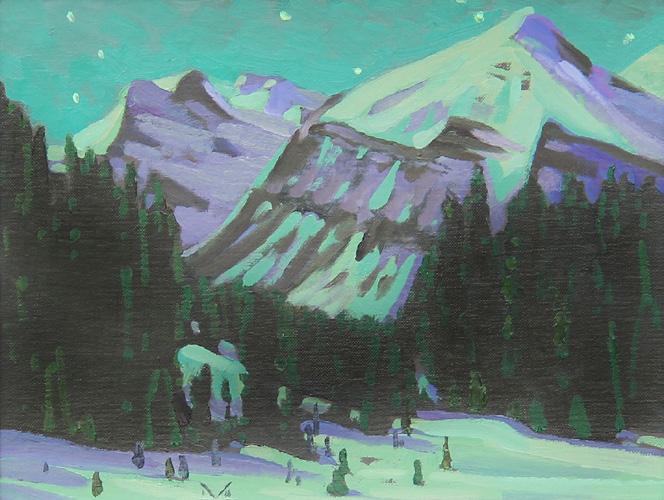

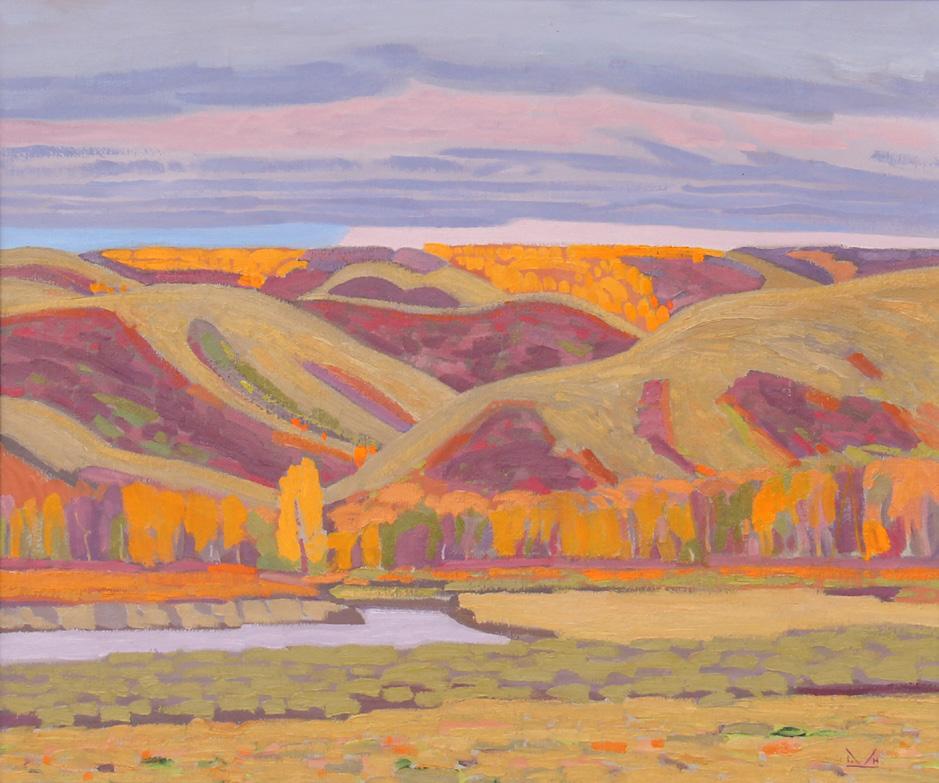
Grey Day, Mid-September, Qu’Appelle Valley, circa 1976
oil on linen, 30” x 36”
Qu’Appelle Valley, September, 1988
oil on burlap, 28” x 38”
Little Farm, Qu’Appelle Valley, (Lumsden, Saskatchewan), 1973 oil on linen, 24” x 34”

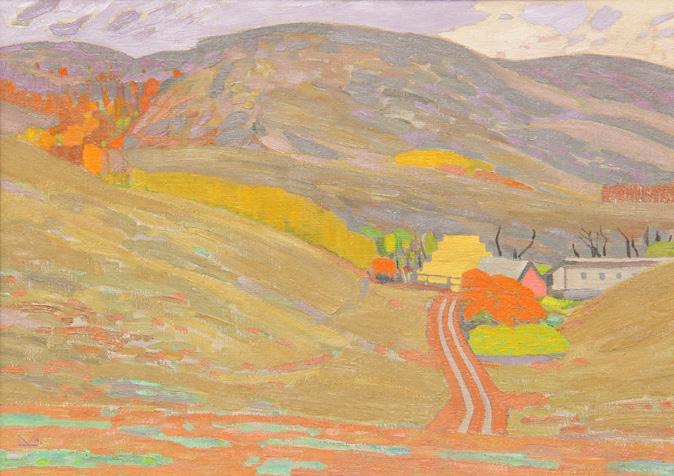

Mountain Beaver, 1988
oil on canvas, 30” x 40”
Southwest, 1988
oil on burlap, 18” x 24”
Beyond Millarville, September, 1987
oil on canvas board, 12” x 16”

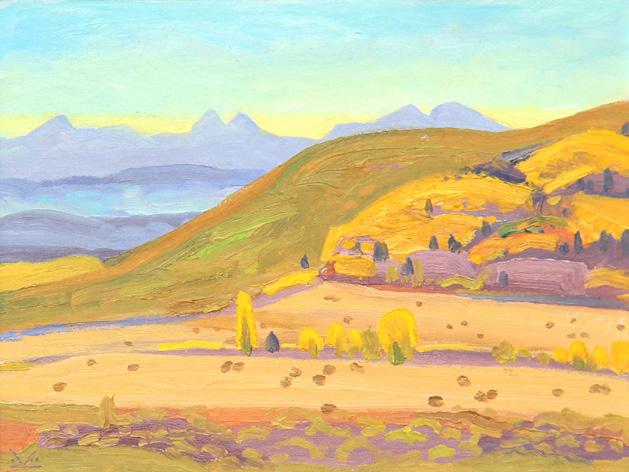
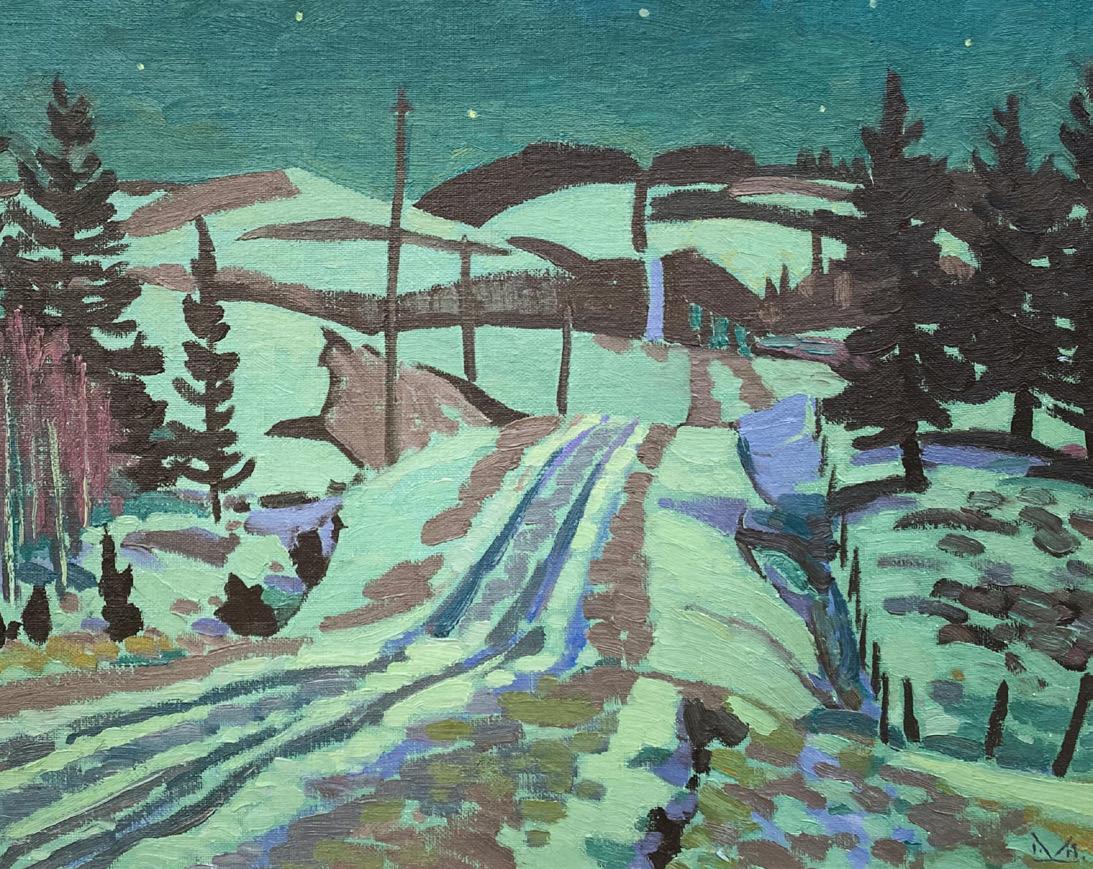
x 24”
